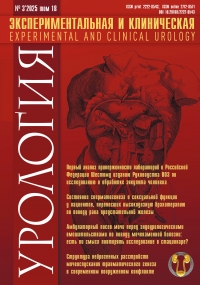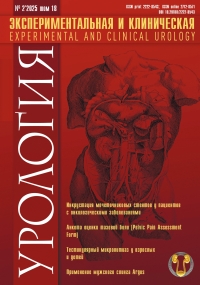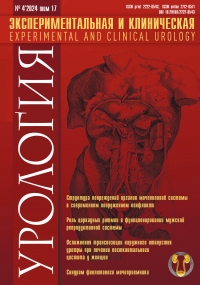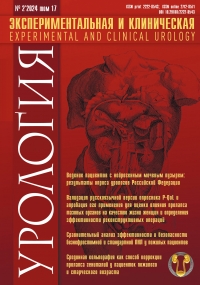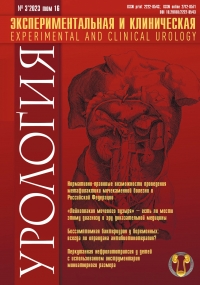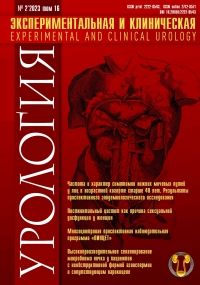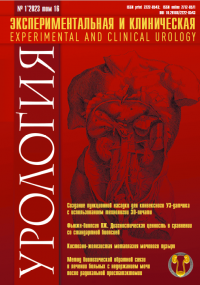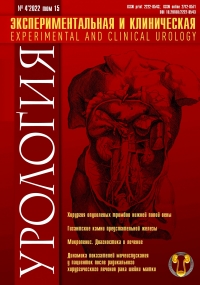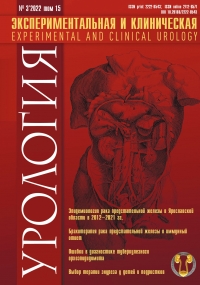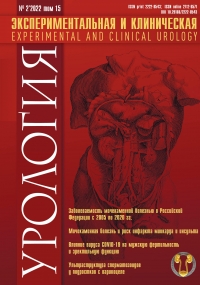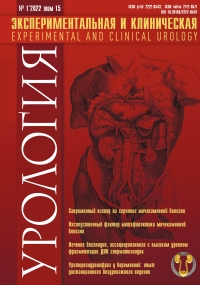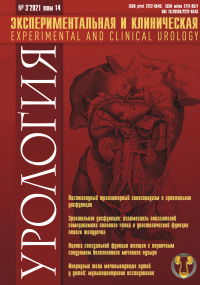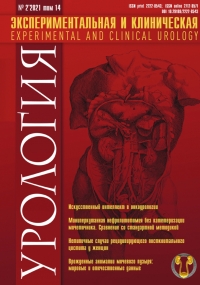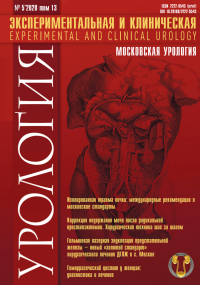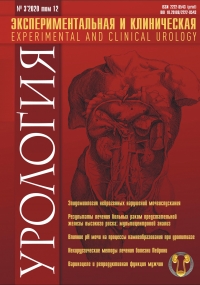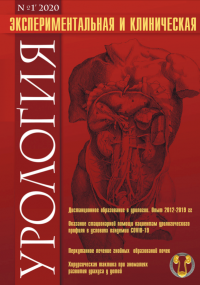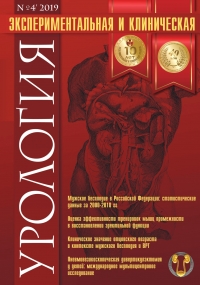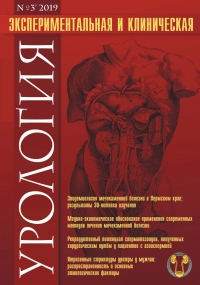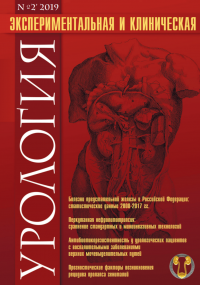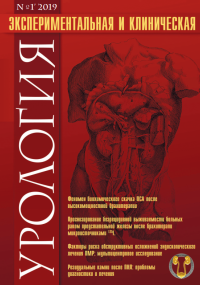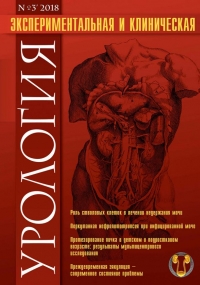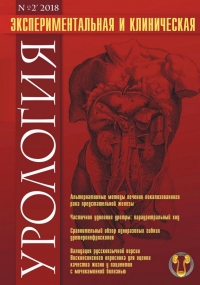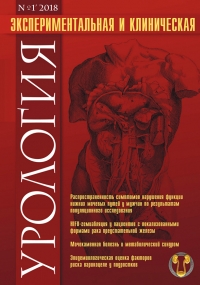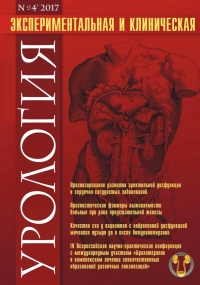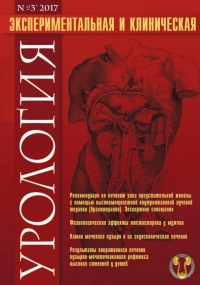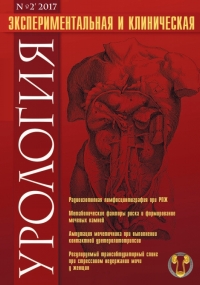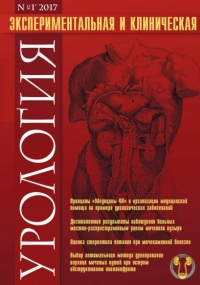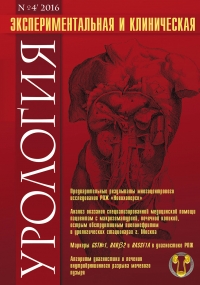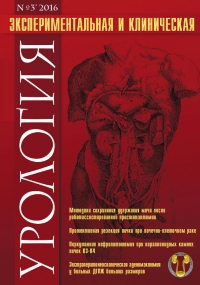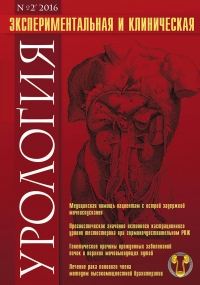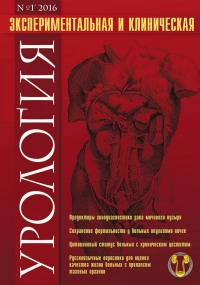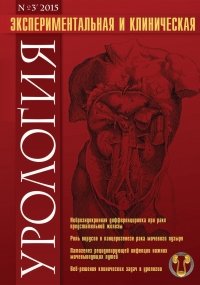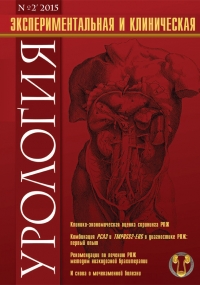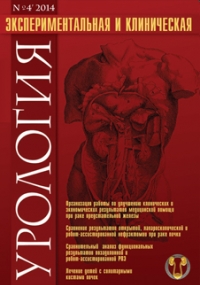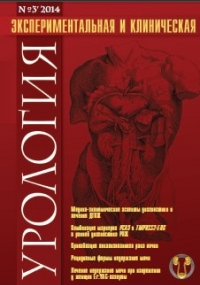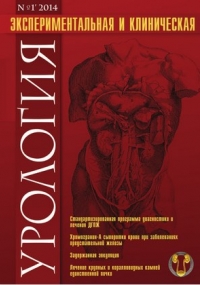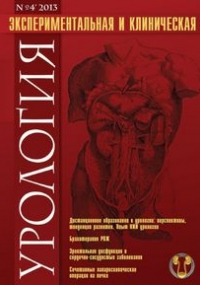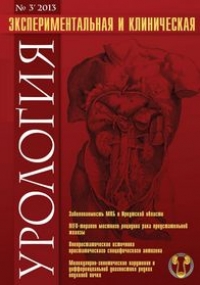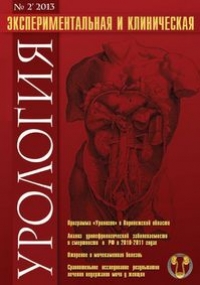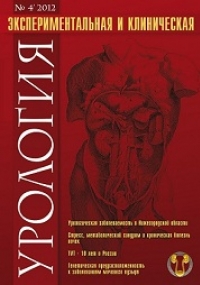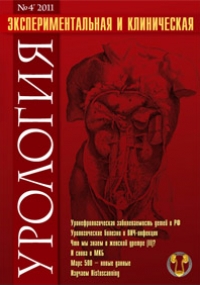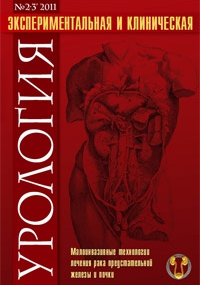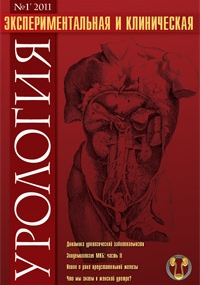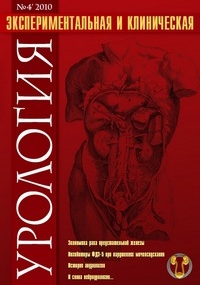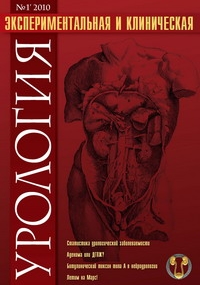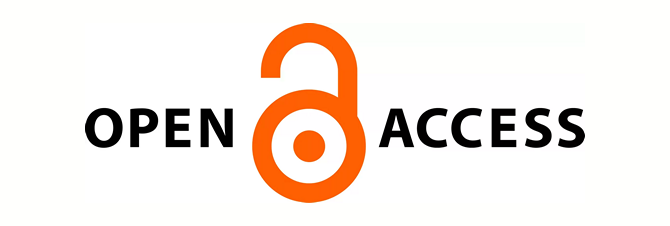The effectiveness of retrograde endoscopic interventions in the treatment of large kidney stones and staghorn nephrolithiasis
 4046
4046 D.S. Merinov, R.R. Fatikhov, L.D. Arustamov, D.A. Pavlov
The purpose of the study – a synthesis and analysis of experience with transurethral endoscopic techniques in patients with large renal stones and staghorn nephrolithiasis. Materials and Methods: Between February 2009 and present time 34 patients with large renal stones and staghorn nephrolythiasis underwent a transurethral laser pyelocalicotripsy at the Research Institute of Urology. The average size of stones was 4.5 cm. In all patients we used hydrophilic ureteral shell 14/16 Ch, 35 cm. Stone destruction was carried out using rigid mini-ureteroscope 8,5 Ch, fibro-ureteroscope 7,5 Ch, holmium laser 50 watt under the fluoroscopy control. Extraction of stones was performed using nitinol baskets. After surgery, kidney was drained by double- J stent for a month. Follow-up was conducted 1 month after surgery. Results: At follow-up examination in 77% of patients clinically significant residual stone fragments were absent. 28% of patients underwent 8 sessions of ESWL on the residual stones. In 14% ESWL was ineffective, repeated fibrocalycolithoextraction was performed. In 7 (21%) cases, low efficacy of transurethral pyelocalycolithotripsy was due to inability to bring ereteral shell up to uretero-pelvic junction. The most significant complication - recrudescence of chronic pyelonephritis was observed in 23% of patients. Conclusion: Transurethral contact laser pyelocalycolithotripsy using hydrophilic ureteral shell is sufficiently effective and safe treatment for staghorn kidney stones. Lower risk of complications is a reasonable alternative method for percutaneous interventions in patients with staghorn nephrolithiasis.


